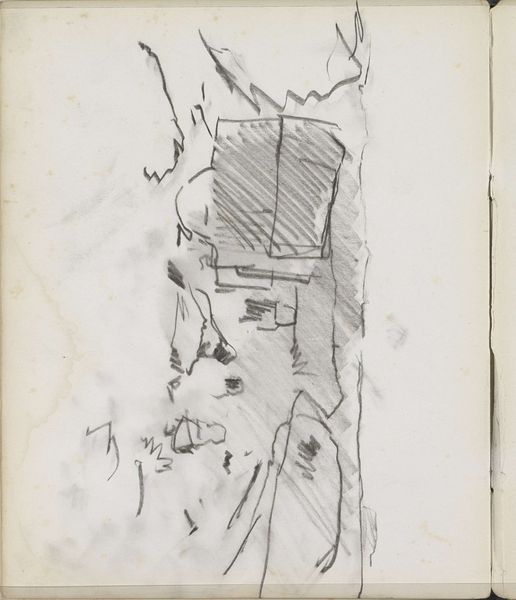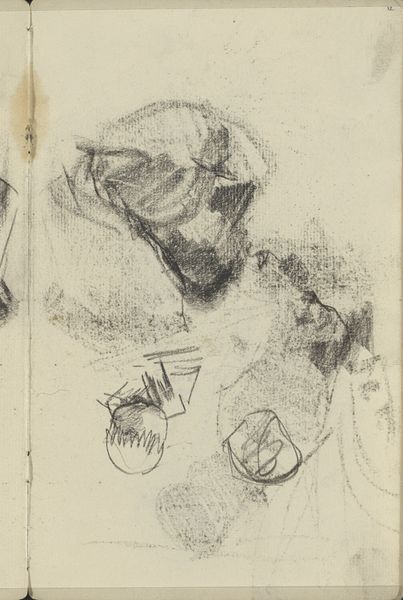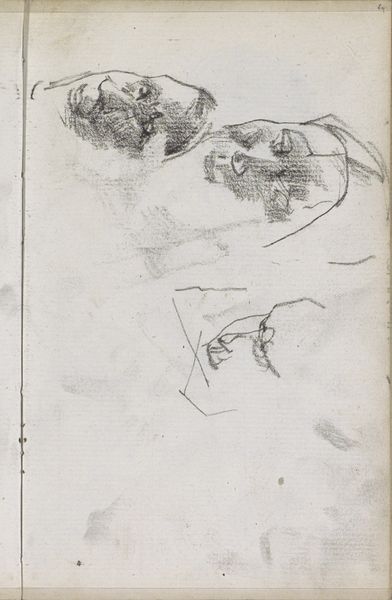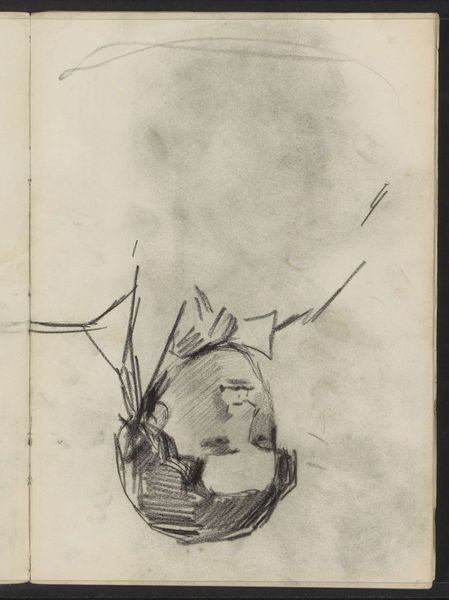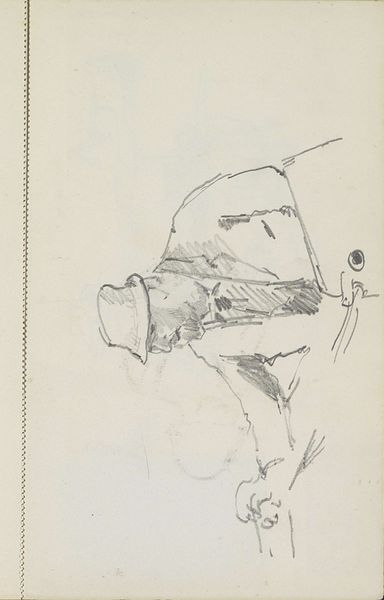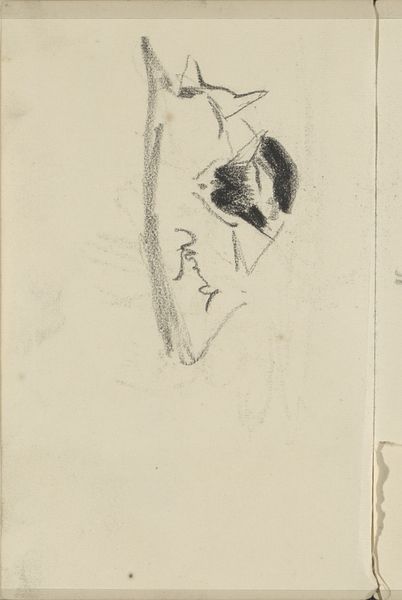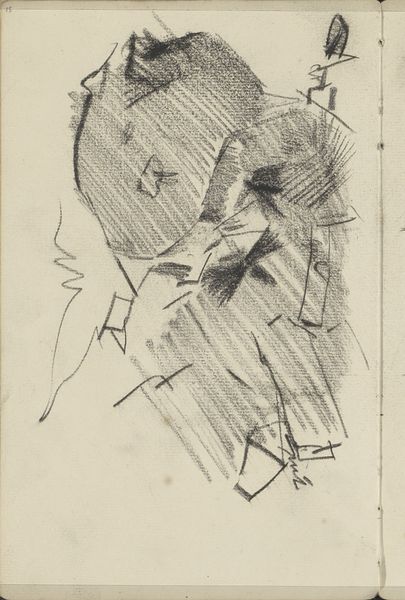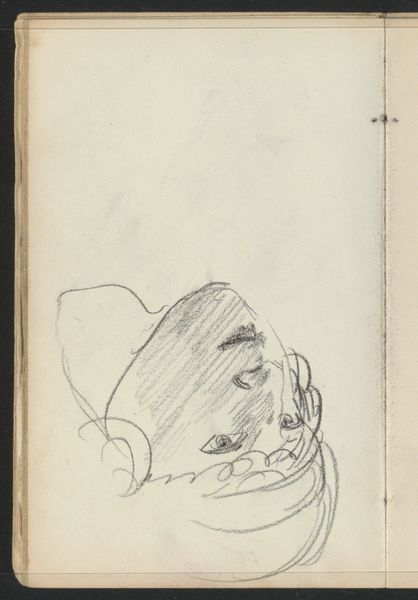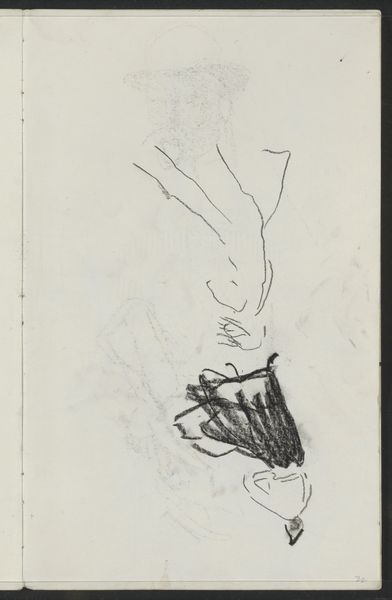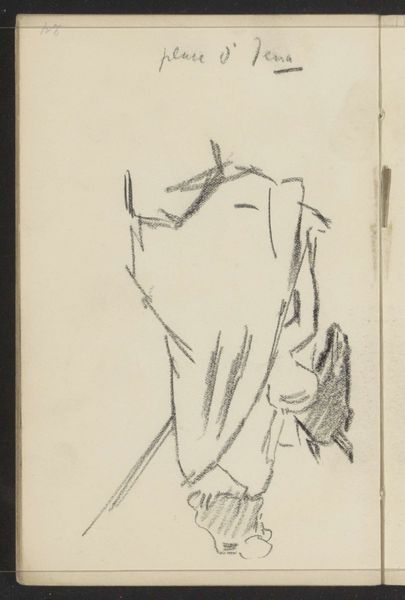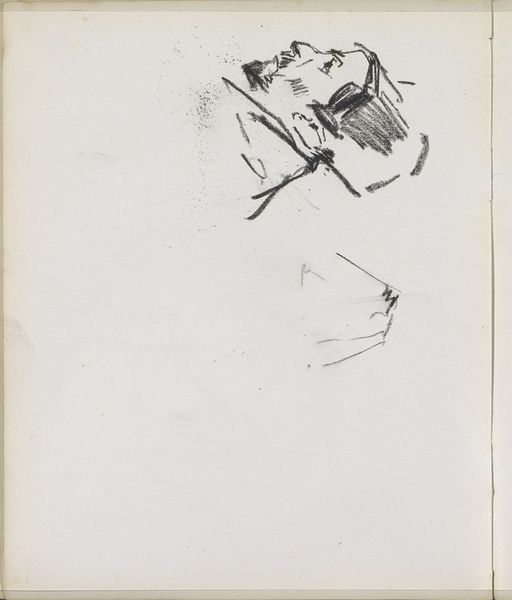
drawing, graphite
#
portrait
#
drawing
#
graphite
#
realism
Copyright: Rijks Museum: Open Domain
Editor: Breitner’s “Mannenhoofd en een zelfportret,” created around 1895 to 1898, a graphite drawing. It feels so raw and immediate, a glimpse into the artist’s mind. What stands out to you in this work? Curator: Well, immediately, the doubled face speaks of a divided self. The self-portrait as a symbol is almost primal, isn't it? Here, the repetition suggests an internal dialogue, a wrestling with identity. Do you notice how one face is more defined, almost assertive, while the other is fainter, more tentative? Editor: Yes, the top one, with the glasses, is much darker. It's almost like two sides of a conversation. Curator: Precisely! Think about what glasses symbolize – seeing, knowledge, a conscious effort to observe. Now, what of the reversed portrait? Does its placement upside down carry significance to you? Editor: Maybe it’s the subconscious, the part of himself that’s hidden or repressed? Curator: Exactly! Consider the cultural moment. Breitner lived in a time of massive social change, when understandings of the self were rapidly evolving thanks to thinkers like Freud. This drawing reflects that internal searching and maybe even some anxiety around the topic. Editor: So, it's not just a sketch, but a representation of inner turmoil? Curator: Visual symbols embed a wealth of significance within art and their associated culture. It gives the piece greater depth, I find. A simple graphite drawing then turns into an interesting insight. Editor: I see what you mean. I never thought about portraits as representing the artist's anxieties. I guess there's more to a face than just what's on the surface. Curator: There always is. This exploration of symbols opens pathways toward understanding cultural narratives within even the simplest work.
Comments
No comments
Be the first to comment and join the conversation on the ultimate creative platform.

